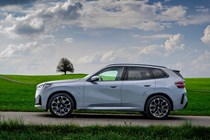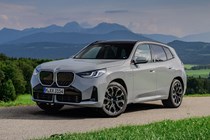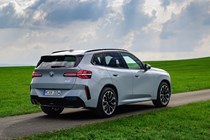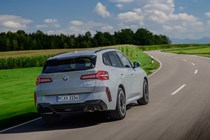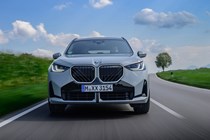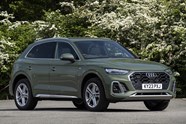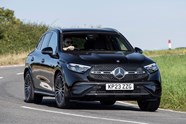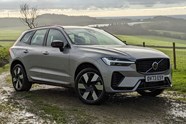
BMW X3 review
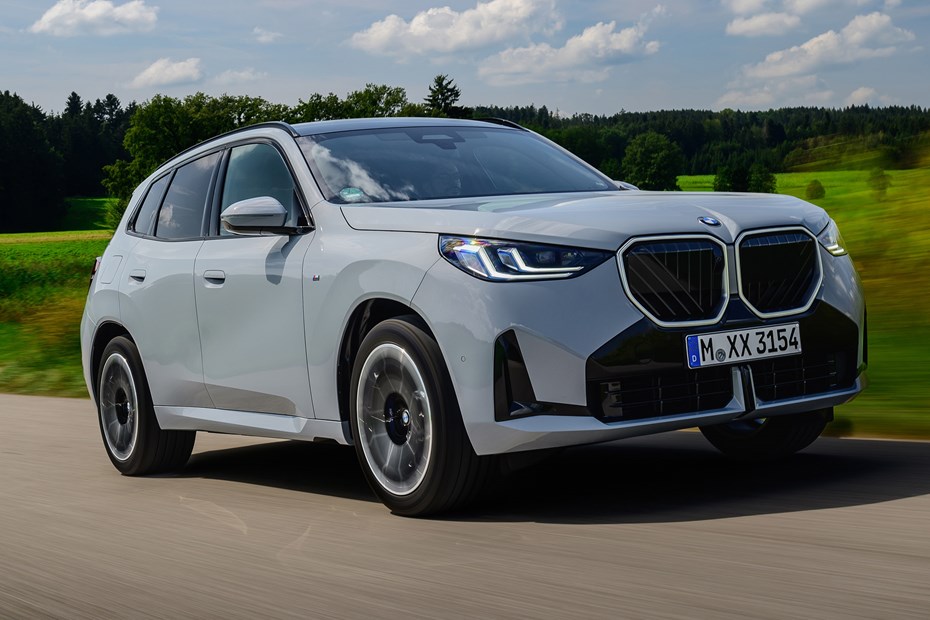
At a glance
| Price new | £48,385 - £66,990 |
|---|---|
| Used prices | £38,688 - £52,910 |
| Road tax cost | £590 - £600 |
| Insurance group | 32 - 41 |
Get an insurance quote with

|
|
| Fuel economy | 35.3 - 48.7 mpg |
| Miles per pound | 5.2 - 6.2 |
| View full specs for a specific version | |
Available fuel types
Petrol
Diesel
Alternative fuel
Pros & cons
- Great balance of sportiness and comfort
- Spacious and versatile boot space
- Impressive technology
- Interior quality is disappointing in places
- PHEV range could be longer
- Can get expensive with options
BMW X3 SUV rivals
Overview
You might expect the 3 Series to be BMW’s most popular car, but it is actually the X3, the firm’s do-everything mid-size family SUV. Since its introduction in 2004, over 3.5 million have been sold, and its popularity is evident, with more than 1,000 units sold worldwide every day
However, the previous-generation BMW X3 was now the firm’s oldest model, being introduced in 2017 – and that’s a long time ago in the car world. That said, BMW did a good job of keeping it relevant by introducing a plug-in hybrid and the electric iX3. Both of these will return for this new fourth-generation X3, though it won’t be until later in 2025 when the next electric model arrives.
This new X3 is a big difference inside and out compared to its predecessor, and is dissimilar to almost any other BMW. The design is pretty bold, with an imposing illuminated front grille, and new T-shaped LED lights at the rear. Moving inside, the new X3 gets the latest version of the firm’s Curved Display digital screens, along with a glowing ‘interaction bar’ that can be used for ambient lighting but also for warnings – such as flashing when the hazard lights are on.
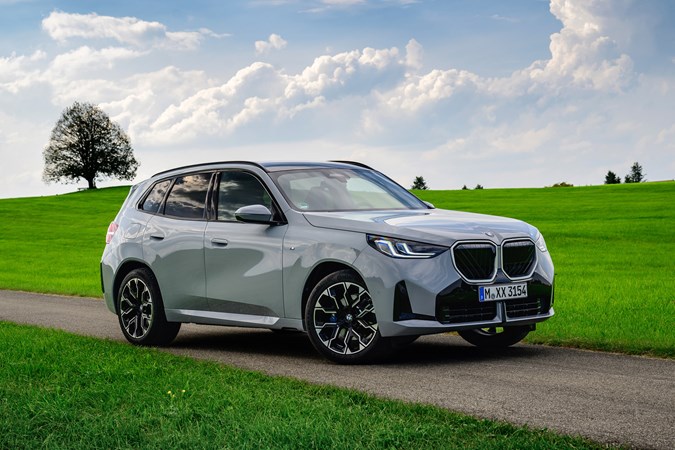
There are some big changes under the surface, too, with the new plug-in hybrid able to travel almost double the number of electric miles as its predecessor, and a new flagship M50 model which uses BMW’s most powerful six-cylinder engine ever.
But the BMW X3 doesn’t have things easy with some particularly impressive rivals. The Mercedes GLC plug-in hybrid stands out with its exceptional electric range, while the Audi Q5 is returning for a new generation at a similar time to when this BMW launches. The Volvo XC60 continues to grow old gracefully while the hybrid Lexus NX remains a stellar choice, too.
So can the new BMW X3 topple the opposition? We’ve been behind the wheel for the first time in Germany to answer the question. Read more about how we test cars at Parkers.
What’s it like inside?
The new X3’s interior is quite a significant change compared to the very conservative cabin of the previous car, with plenty of gimmicks and gadgets to play with. The fan speed of the side air vents, for example, is controlled by a small sliding bar on the door cards, while the glowing ‘interaction bar’ that stretches halfway across the dashboard and door cards looks great.
The new X3 is one of the last BMWs to get its ‘Curved Display’ interior layout, first introduced in 2021, which includes a 14.9-inch infotainment touchscreen and a 12.3-inch digital instrument cluster, both running on its latest software. Unlike some of BMW’s other models, the new X3 retains the useful rotary iDrive controller too, meaning that – unlike many rivals – you aren’t purely reliant on touch to operate the main screen. With pin-sharp graphics and a particularly speedy responsive time, it’s one of the best touchscreens fitted to any car of this class.
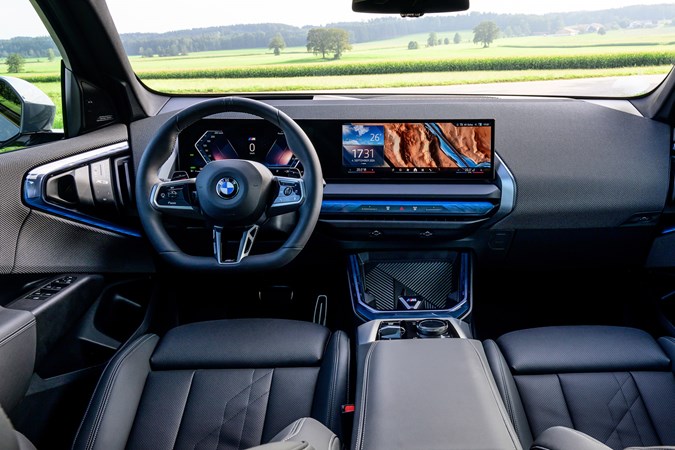
But while the X3’s interior might sound rather impressive, there’s one element that lets the side down – the quality, which is particularly surprising for a BMW. The area around the electric window switches feels particularly cheap, and the strip below the touchscreen is low-rent, too. You can also choose a fabric ‘Luxury Instrument Panel’ for £450 that somehow feels cheaper than the standard leather-effect material. We’d strongly advise against this.
Where the X3 performs better is when it comes to interior space. While rear passenger space doesn’t feel significantly more generous than the smaller X1, albeit it’s not exactly cramped, the boot is especially useful. It grows in size from 550 to 570 litres and is a wide area ideal for family duties, increasing to 1,700 litres with the rear seats folded. That’s quite a lot more than the 1,550 litres provided with the previous X3.
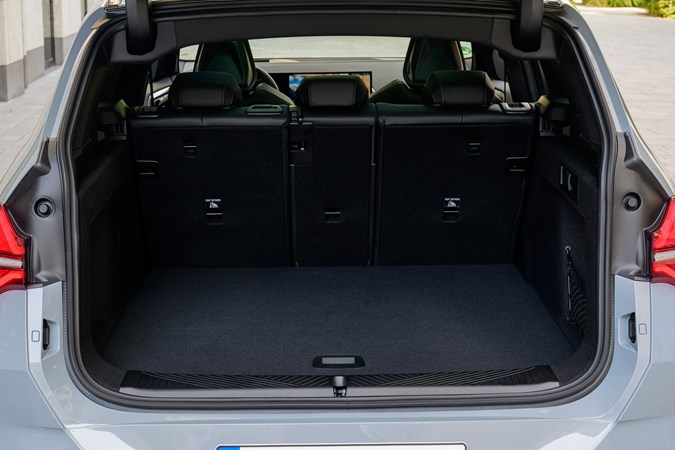
The retractable load cover also effortlessly slides in and out of its holder, with a dedicated area beneath the boot floor to keep it out of the way. Be aware that you lose the underfloor boot area with the plug-in hybrid because of its large battery.
Engines
BMW is cutting back its choice of engines in the UK across its line-up, but there’s still a decent range of versions available with the X3, including two petrol, one diesel and a plug-in hybrid we’ll explore in a later section. All X3s are all-wheel-drive and use an eight-speed automatic transmission, too.
The entry-level engine is the 20 xDrive, a mild-hybrid 2.0-litre petrol engine producing 208hp and 330Nm of torque (pulling power). With this, 0-62mph can be dispatched in 7.8 seconds, yet BMW still claims around 40mpg.

BMW has largely discontinued diesel from its line-up with the exception of its SUVs, and the new X3 remains available with fuel from the black pump. The firm says this is because diesel still appeals to the towing market, and with the ability to tow up to 2.5 tonnes, the X3 could be a good choice for caravanners. The engine is called the ‘20d xDrive’ – a 2.0-litre mild-hybrid diesel putting out 197hp and 400Nm of torque. Accelerating to 62mph will take 7.7 seconds, with BMW claiming up to 49mpg – if you clock up a lot of miles and want to keep fuel bills to a minum, it’s an appealing choice.
At the top of the current X3 line-up is the new M50 model, which uses BMW’s most powerful straight-six engine ever. Producing a plentiful 398hp and 580Nm of torque, it’s by far the quickest version of this SUV available. Accelerating from 0-62mph takes just 4.6 seconds and the top speed is limited to 155mph. Though unsurprisingly the running costs are higher, it’s not as inefficient as you might expect, with figures not too far behind the standard petrol, though of course, this will massively depend on how you drive it.
Plug-in hybrid
Plug-in hybrids have been key to the X3’s continued strong sales performance, and BMW is hoping that continues with the new 30e xDrive model. Using a 2.0-litre turbocharged petrol engine and electric motor integrated within the gearbox, total figures are 299hp and 450Nm of torque, enabling a 6.2-second 0-62mph time.

The key attraction here is its new, larger 19.7kWh battery that unlocks a claimed 56-mile electric range, almost twice that of its predecessor, though we’re yet to drive it. While a big improvement, it’s still someway behind the exceptional 83-mile electric range of the Mercedes GLC.
What it’s like to drive?
The driving experience has long been the best bit of the X3, and that only improves with this latest model. The majority of our driving time is spent in the top-spec M50 model, which is more of a rival for the Audi SQ5 and Mercedes-AMG GLC43, but if you’ve got a bit more money to spend on a premium SUV, it is an exceptional choice.
Silky smooth and delivering strong performance, it suits the X3 perfectly, with a pleasing engine and exhaust note to go with it. The X3 is one of the best cars to drive in its class, with plenty of steering feel and a tight turn-in, allowing you to drive this SUV harder than you would feel comfortable in most rivals. Yet despite this sportier feel, the ride quality is still impressive.
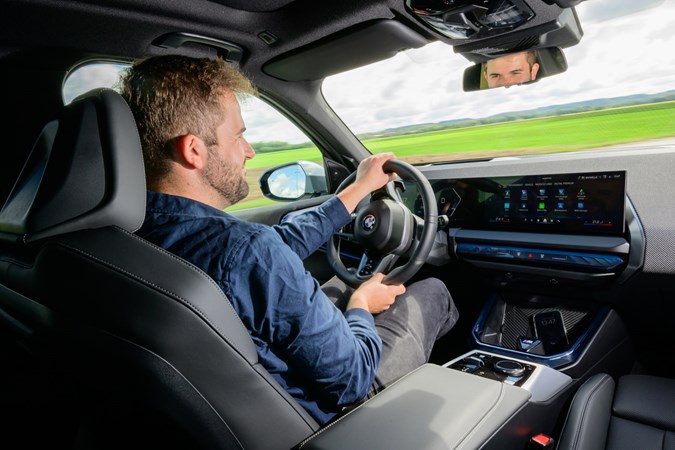
Every X3 we’ve tried so far rides on adaptive suspension, allowing you to flick between various settings for maximum comfort, and even in its harshest setting, the ride quality is excellent. From what we can tell it’s far more comfortable than its predecessor, with more breadth of ability in its damping. The older X3 always rode on the firmer end of the spectrum,
We’ve only had a brief stint in the entry-level petrol option, but for most drivers this could prove the best option with a good balance of performance, economy and value. It was surprisingly refined for a four-cylinder petrol, and though not the quickest choice, should offer more than enough performance for most scenarios.
What models and trims are available?
There are three trims available on the new X3 – xLine, M Sport and the M50.
Prices start from £48,375 for the xLine, with standard equipment including 18-inch alloy wheels, an electric boot, the impressive Curved Display, electric and heated memory seats and wireless smartphone charging. M Sport trim will be the most popular version, as it was on the previous model, and brings a sportier body kit, larger 19-inch alloy wheels and part-Alcantara sports seats.
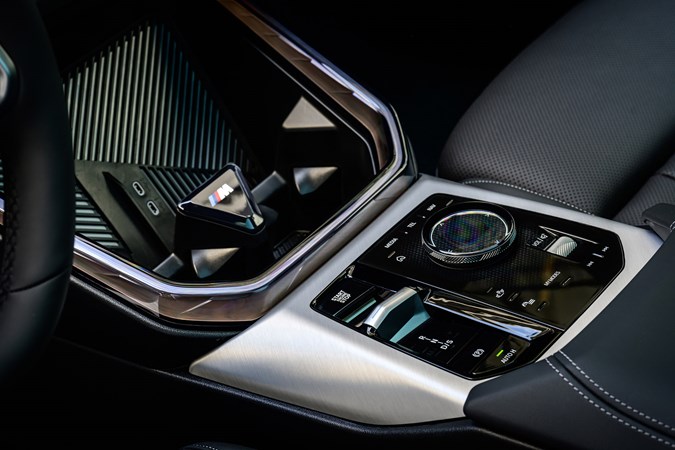
The M50 commands a significant price increase, starting from £66,980, though you do get a lot of additional performance to go with it. Other features include 20-inch alloy wheels, an illuminated grille and upgraded brakes.
BMW also offers a range of option packs that bundle various pieces of additional equipment together. The £2,850 Comfort Plus Pack is worth considering as this brings adaptive LED headlights, ventilated front seats and an excellent Harman Kardon sound system.
What else should I know?
You might be wondering what’s happened to the electric BMW iX3, which has been key to this SUV’s appeal in recent years. Production of the previous-generation iX3 will continue until next year in China, when it’s replaced by a brand-new model in 2025.
The new iX3 is a hugely important car as it signals a new era of BMW, known as ‘Neue Klasse’ that introduces a new design to the BMW brand. The electric iX3 will also be produced on bespoke electrical underpinnings, rather than using the platform of the petrol and hybrid car reviewed here.





